Archaeology
Monthly Archive: December Arch
Weapon Wednesday: Two daggers from Luristan, Iran
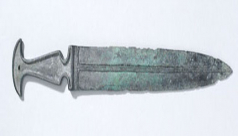
In museum circles the region of Luristan in the Zagros Mountains has a long association with the antiquities looted from tombs there in the 1920's and 30's. These objects seem to be primarily from the Early Iron Age (circa 1000 BC - 750 BC), and comprise an array of distinctive objects that include horse bridles and other equipment; fittings possibly associated with chariots; and an array of weapons, primarily of bronze.
Weapon Wednesday: Frankish "Seax" swords
In the 3rd century of the current era the term "Frank" was used by Romans and others to describe a group of Germanic tribes living in the Rhine valley. In the 4th century Franks settled within territory ruled by the Romans and were a recognised kingdom. After the fall of the Western Roman Empire the Frankish kingdom under their Merovingian kings spread over all of France (which to this day is named after this confederation of Germans).
Weapon Wednesday: a Romano-Egyptian sword hilt
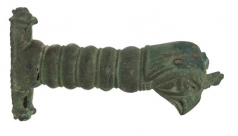
A look at a cast bronze sword hilt, acquired before 1910 in Cairo by Charles Currelly and presently in the Eaton Gallery of Rome.
Weapon Wednesday
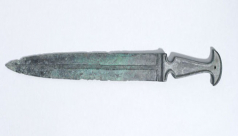
Weapons are one of the most politically-incorrect subjects there are, associated with brutality and violence. But they are also important, and have often defined the cultures that made them....
Restoring a Rebel Pharaoh’s Kingdom: In the field with Prof. Barry Kemp
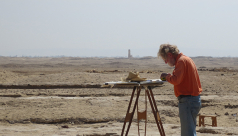
Laura Ranieri's experience working with Prof. Barry Kemp CBE of Cambridge University and a small archaeology team as they excavated and partially reconstructed Akhenaten's Great Temple of Aten in Egypt.
Interview: Egyptologist Barry Kemp
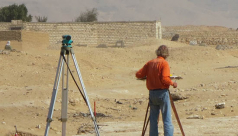
Professor Barry Kemp CBE is an esteemed British Egyptologist who has been excavating at Amarna for 35 years. His critically acclaimed book, The City of Akhenaten and Nefertiti, was released in 2012 and is available online and in bookstores. He spoke at the ROM on September 19, 2013. I was lucky enough to spend two weeks at the site of Amarna in February of 2013. During that time, I had the opportunity to interview Prof. Kemp. The following is an edited version of that conversation. All photos copyright Laura Ranieri, 2013.
Re-enactment, Archaeology, and the Ancient Rome & Greece Weekend V of IV: The Final Story
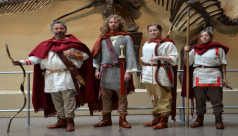
Ancient Rome & Greece Weekend is over, and I thought I would show you the results of my attempt to create a recreation, re-enactment, or impression of a soldier from Dura-Europos (so this is not really one of the original IV, so to speak, hence it is V of IV). In the group above you can see me on the left, with members of the University of Toronto's Hart House Archery Club, who collectively constitute the ROM's 3rd century Roman army (or ROMan army - it being the ROM, we are posing in front of a dinosaur).
Re-enactment, Archaeology, and the Ancient Rome & Greece Weekend IV of IV: The Tunic
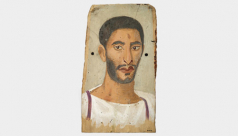
An important part of everyday life in the past, but one with very little impact on the archaeological record, is clothing...
Re-enactment, Archaeology, and the Ancient Rome & Greece Weekend III of IV: The Dagger
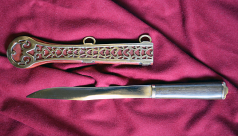
So in my project to recreate the equipment of a 3rd century Roman soldier from Dura-Europos, following the creation of the sword, I next moved on to the dagger. Little seems to be known about the daggers used by soldiers in the Roman World of the 3rd century AD.
Daily Life in Greek & Roman: Insights from our Interns
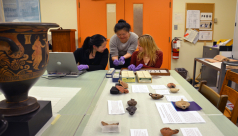
Student interns are a vital part of behind-the-scenes throughout the ROM...
